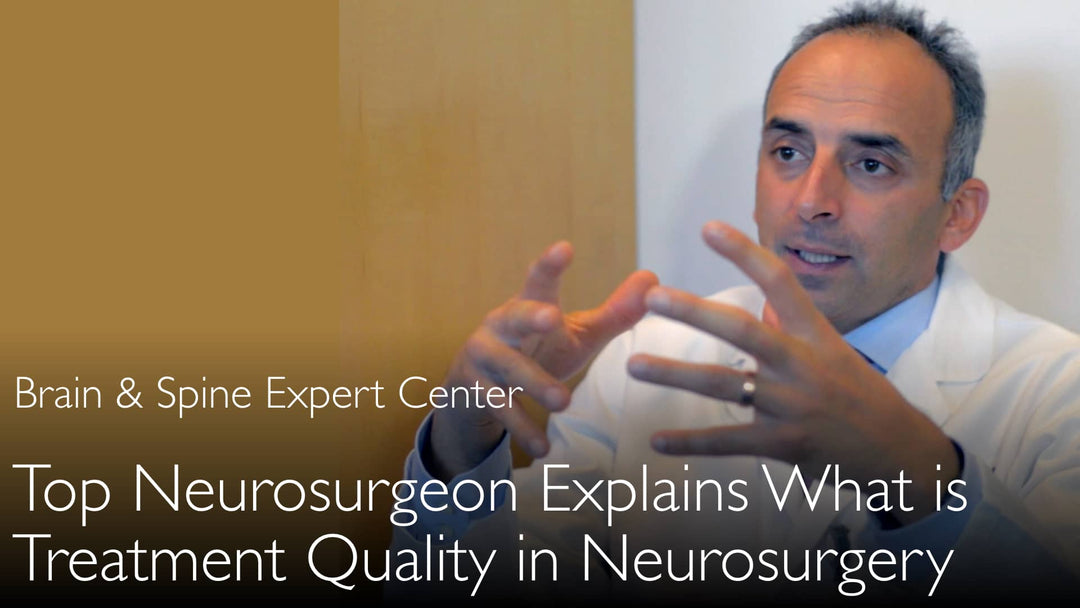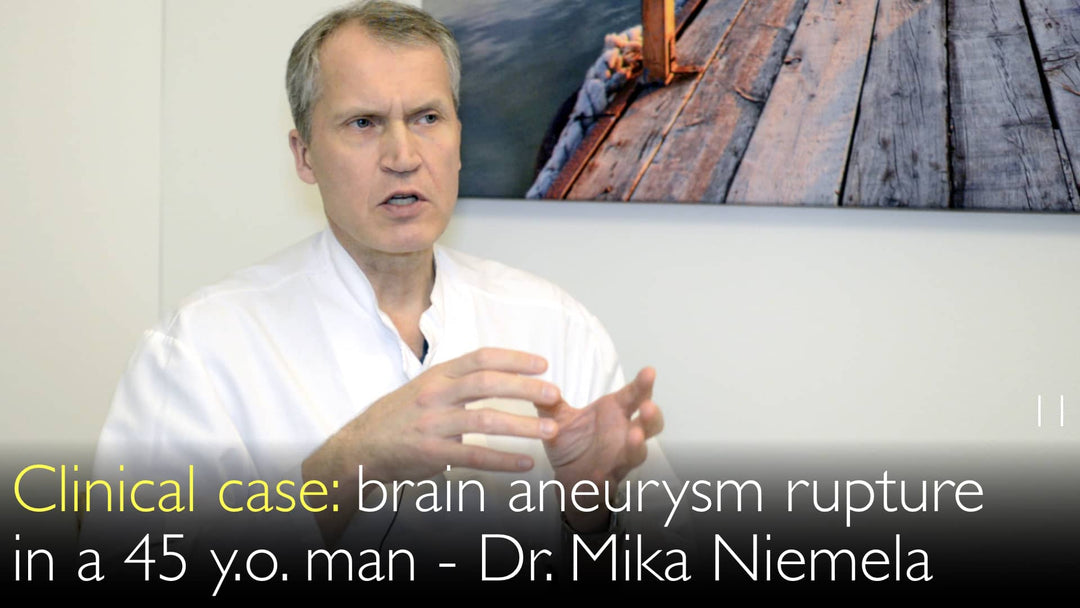Leading expert in cerebrovascular neurosurgery, Dr. Mika Niemela, MD, explains how to choose the best brain aneurysm treatment. He details the critical factors in the coiling vs. clipping decision. Patient age and aneurysm location are paramount. Modern endovascular techniques like stenting and flow diversion offer new options. Careful long-term follow-up with imaging is essential for all patients.
Brain Aneurysm Treatment Options: Coiling, Clipping, and Stenting
Jump To Section
- Treatment Options Overview
- Patient Age and Health Factors
- Aneurysm Location and Shape
- Modern Techniques Evolution
- Long-Term Follow-Up and Monitoring
- Full Transcript
Treatment Options Overview
Brain aneurysm treatment involves two primary approaches. Dr. Mika Niemela, MD, describes the classical open surgery method known as clipping. He also explains the less invasive endovascular procedure called coiling. Clipping has historically been viewed as a definitive, permanent solution for an intracranial aneurysm. Coiling offers a minimally invasive alternative but may require additional procedures over time.
Patient Age and Health Factors
Patient-specific factors are critical in selecting the best brain aneurysm therapy. Dr. Mika Niemela, MD, emphasizes that a patient's age is a major consideration. He notes that microsurgical clipping may be the preferred option for younger patients. This is especially true for aneurysms located in the anterior circulation of the brain. For elderly patients or those with significant comorbidities, the less invasive coiling procedure often presents a lower risk profile.
Aneurysm Location and Shape
The anatomical characteristics of the aneurysm itself guide treatment strategy. Dr. Mika Niemela, MD, discusses how the aneurysm's form, size, and location influence the decision. Aneurysms in the anterior circulation are often more accessible for surgical clipping. The shape of the aneurysm can determine if simple coiling is sufficient or if advanced techniques like stenting or flow diversion are necessary to treat it effectively.
Modern Techniques Evolution
Endovascular technology has advanced dramatically, expanding treatment possibilities. Dr. Mika Niemela, MD, highlights that techniques have evolved to a point where retreating a previously coiled aneurysm is less common. He explains to Dr. Anton Titov, MD, that instead of converting to surgery, neurosurgeons can now add more coils. They can also deploy a stent or a flow diverter within the existing coil mass to achieve a stable, long-term result.
Long-Term Follow-Up and Monitoring
Ongoing surveillance is a mandatory part of brain aneurysm care, especially after coiling. Dr. Mika Niemela, MD, stresses the importance of careful, lifelong follow-up for these patients. Monitoring is conducted using advanced imaging techniques. These include digital subtraction angiography (DSA) and magnetic resonance angiography (MRA). This imaging helps clinicians assess the aneurysm's behavior and determine if any additional intervention is needed to ensure a patient's safety.
Full Transcript
Dr. Anton Titov, MD: Clipping of brain aneurysm has classically been considered a definitive treatment. New brain aneurysm coiling options and even stenting of brain aneurysms result in better long-term outcomes.
Let’s talk about treatment of brain aneurysms. There is obviously an endovascular "coiling" of brain aneurysms.
Dr. Mika Niemela, MD: Yes. There is also a classical open brain surgery "clipping" of brain aneurysms. But the coiling of brain aneurysm might not be a permanent treatment of the brain aneurysm. We recognize that coiling of aneurysm is less invasive.
Dr. Anton Titov, MD: You have done research regarding clipping of brain aneurysms that were previously coiled. How do you compare the treatment options of coiling and clipping of brain aneurysm? Some brain aneurysms need to be clipped after they were coiled.
Dr. Mika Niemela, MD: It depends on the age of the patient. For younger patients, maybe it is better to clip brain aneurysm. It is especially true if brain aneurysm is located in the anterior blood circulation.
Clipping of unruptured brain aneurysm in the anterior circulation is perhaps better. It depends on the other risk factors. Patient could be elderly. Patient could have poor health because of other diseases.
Dr. Anton Titov, MD: Then brain aneurysm coiling is less risky. Best method of brain aneurysm treatment also depends on the form of the aneurysm.
Dr. Mika Niemela, MD: Aneurysms can be clipped, coiled, or stented. Or we can apply a flow diverter endovascularly. Treatment choice depends on the shape and size of the brain aneurysm.
But that matters less today. Because we use modern techniques of brain aneurysm treatment.
Dr. Anton Titov, MD: But in younger patients, microsurgery has more permanent results than endovascular coiling or stenting of brain aneurysms. We have analyzed our case series of treatment of brain aneurysms.
Dr. Mika Niemela, MD: We clipped brain aneurysms that have been previously coiled partially. But today the techniques of endovascular treatment of brain aneurysms are better.
They have evolved so much that very rarely do we have to clip a partially coiled brain aneurysm. Because you can add coils later to the brain aneurysm. Or you can put a stent or flow diverter to the brain aneurysm.
That has become less of a problem than we thought it would be. The initial decision whether to coil or to clip a brain aneurysm could be the final decision for that particular patient?
Yes, exactly. Then you can continue with the same technique. Sometimes you need to add more coils later to the brain aneurysm. A neurosurgeon can coil a brain aneurysm. Neurosurgeon does not necessarily need to clip a brain aneurysm later.
Dr. Anton Titov, MD: How do you assess the patients who had brain aneurysm coiled? How do you know whether they need some additional coils put in?
Dr. Mika Niemela, MD: We follow the patients with digital subtraction angiography, DSA. We also perform MRA, magnetic resonance imaging angiography. It depends on how the brain aneurysm behaves during our follow-up with a patient.
We always follow these patients carefully.







